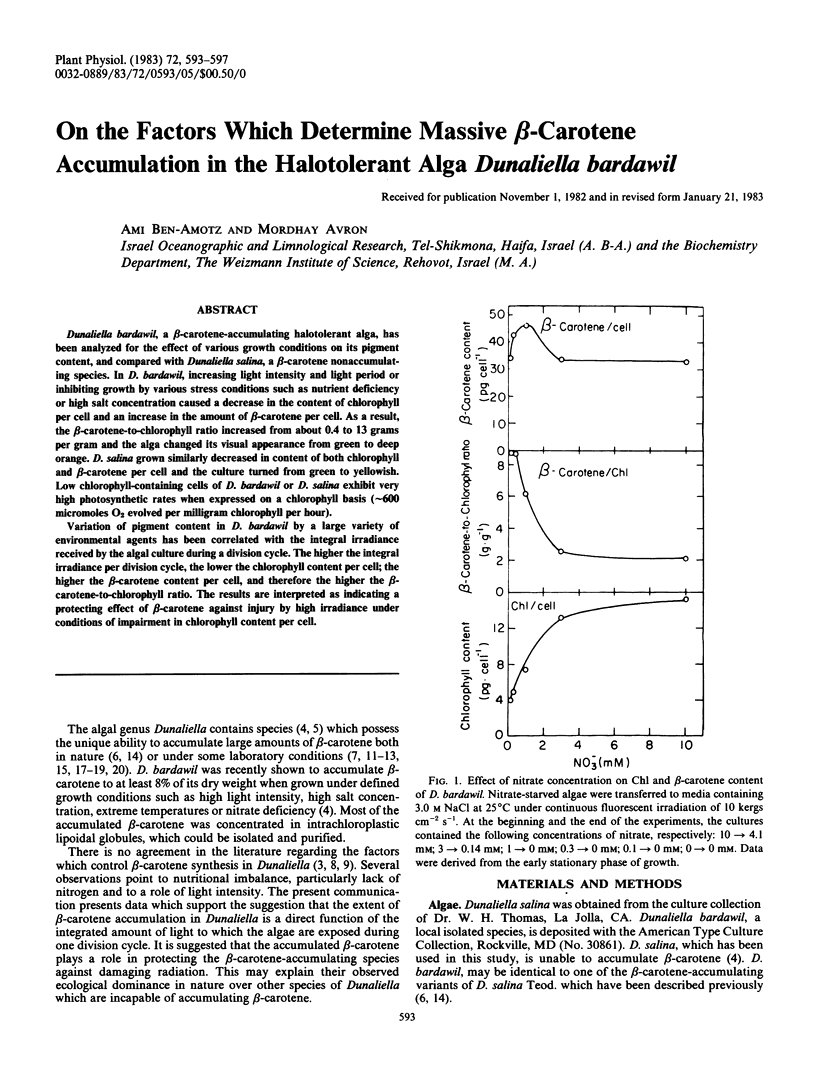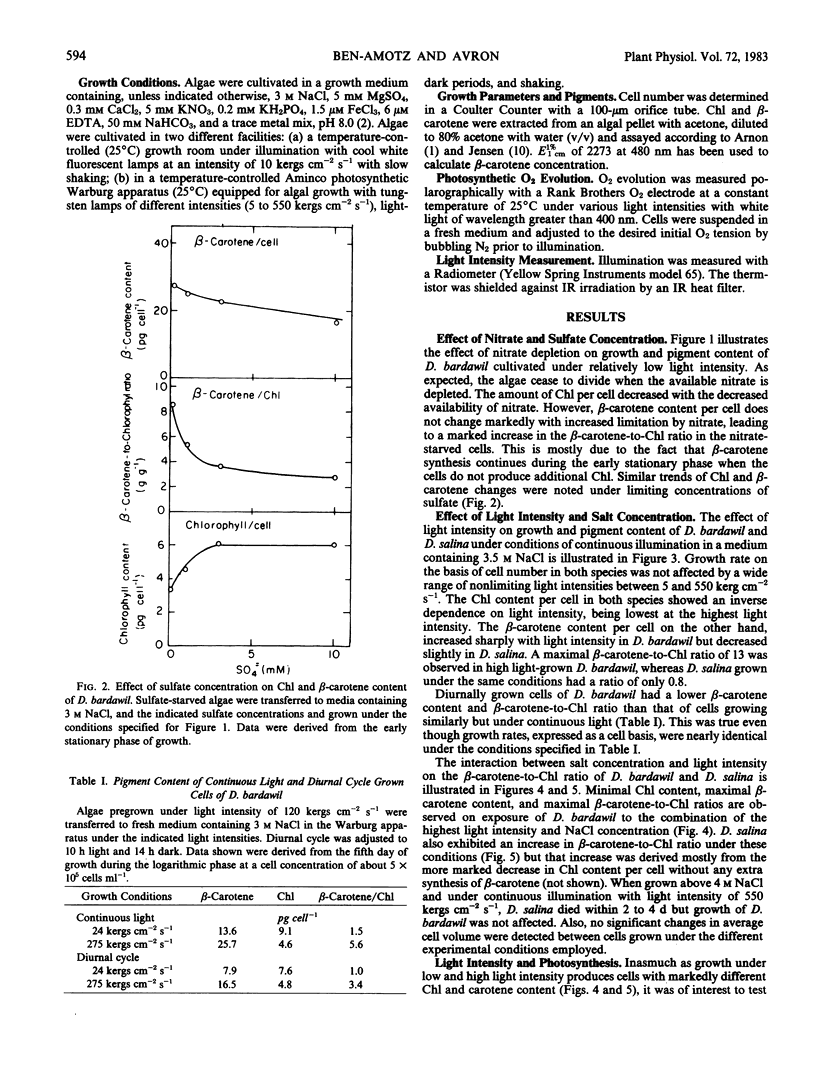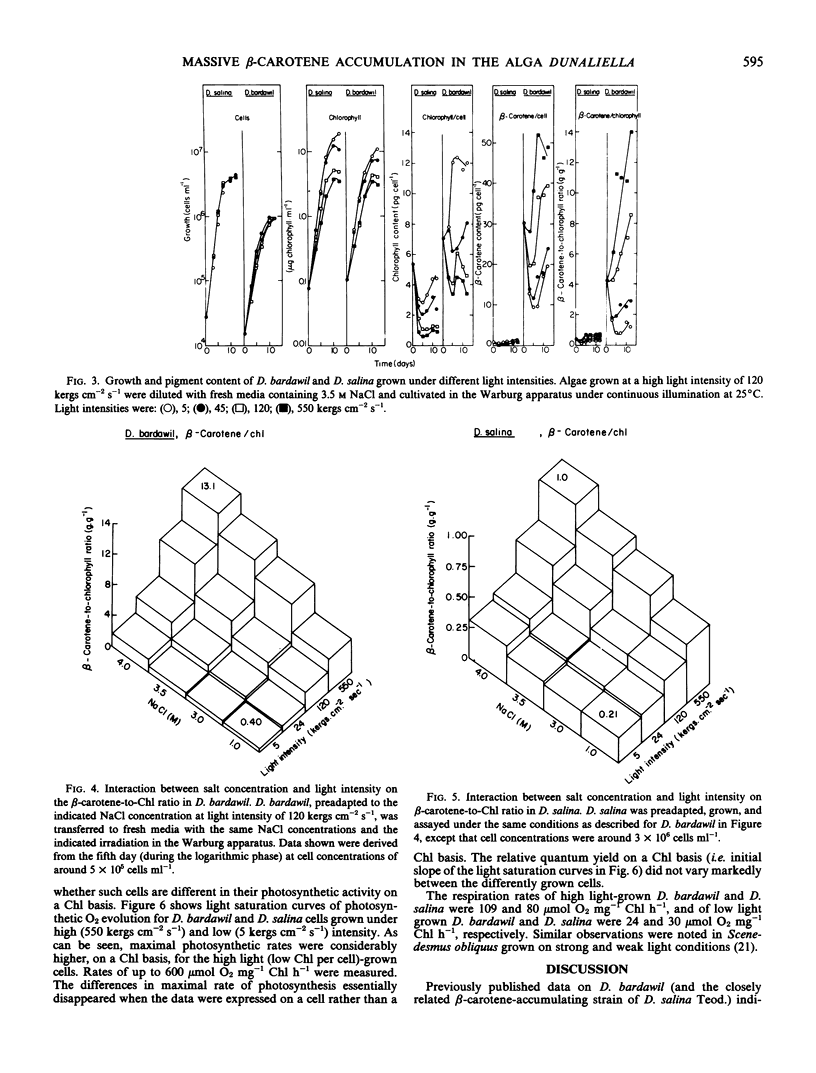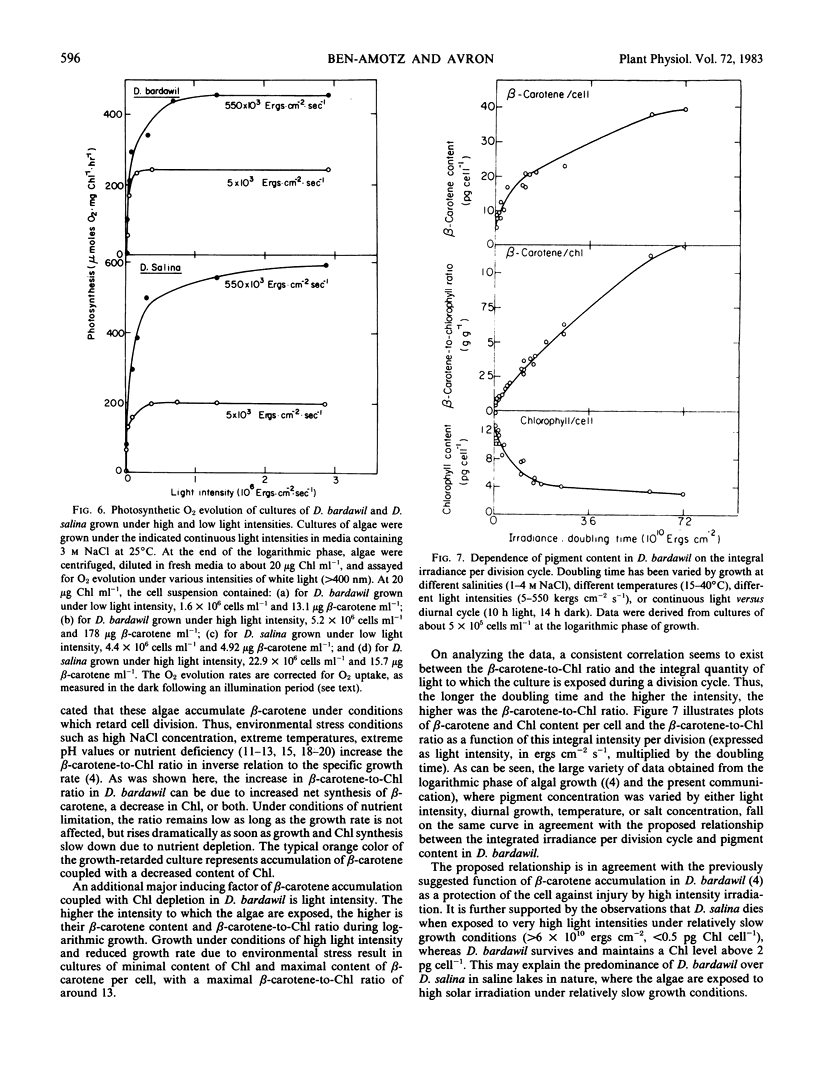Abstract
Dunaliella bardawil, a β-carotene-accumulating halotolerant alga, has been analyzed for the effect of various growth conditions on its pigment content, and compared with Dunaliella salina, a β-carotene nonaccumulating species. In D. bardawil, increasing light intensity and light period or inhibiting growth by various stress conditions such as nutrient deficiency or high salt concentration caused a decrease in the content of chlorophyll per cell and an increase in the amount of β-carotene per cell. As a result, the β-carotene-to-chlorophyll ratio increased from about 0.4 to 13 grams per gram and the alga changed its visual appearance from green to deep orange. D. salina grown similarly decreased in content of both chlorophyll and β-carotene per cell and the culture turned from green to yellowish. Low chlorophyll-containing cells of D. bardawil or D. salina exhibit very high photosynthetic rates when expressed on a chlorophyll basis (∼600 micromoles O2 evolved per milligram chlorophyll per hour).
Variation of pigment content in D. bardawil by a large variety of environmental agents has been correlated with the integral irradiance received by the algal culture during a division cycle. The higher the integral irradiance per division cycle, the lower the chlorophyll content per cell; the higher the β-carotene content per cell, and therefore the higher the β-carotene-to-chlorophyll ratio. The results are interpreted as indicating a protecting effect of β-carotene against injury by high irradiance under conditions of impairment in chlorophyll content per cell.
Full text
PDF




Selected References
These references are in PubMed. This may not be the complete list of references from this article.
- Arnon D. I. COPPER ENZYMES IN ISOLATED CHLOROPLASTS. POLYPHENOLOXIDASE IN BETA VULGARIS. Plant Physiol. 1949 Jan;24(1):1–15. doi: 10.1104/pp.24.1.1. [DOI] [PMC free article] [PubMed] [Google Scholar]


